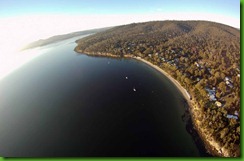Friends of Coningham NRA
Group working to protect the Coningham NRA
Wednesday 2 July 2014
Monday 24 June 2013
friends of coningham nature recreation area

The Friends of Coningham Nature Recreation Area formed in 2002. Our aim is to improve the habitat in the reserve by removing environmental weeds, particularly Spanish heath (Erica lusitanica) which has been identified as the most significant threat to the biodiversity of the reserve. Coningham NRA is a 500 hectare reserve about 25 kms south of Hobart managed by the Tasmanian Parks and Wildlife. Service. It protects a number of threatened plant and animal species and several threatened plant communities. It is particularly important because of its connectivity across the landscape - being the closest mainland to Bruny Island and connecting through private land to the Snug Tiers.
Friends of Coningham NRA are members of Wildcare Inc. As one of the benefits of belonging to this organisation we have received significant administrative support and several grants. We are also members of Landcare Tasmania and SCAT [Southern Coastcare Association of Tasmania], both of these groups have also supported us with grants to assist us to improve habitat and facilities in the reserve. In addition we have received grants from the Federal Government and from NRM South.
CONTACT Email JeanTaylorTas@gmail.com
Friends of Coningham NRA are members of Wildcare Inc. As one of the benefits of belonging to this organisation we have received significant administrative support and several grants. We are also members of Landcare Tasmania and SCAT [Southern Coastcare Association of Tasmania], both of these groups have also supported us with grants to assist us to improve habitat and facilities in the reserve. In addition we have received grants from the Federal Government and from NRM South.
CONTACT Email JeanTaylorTas@gmail.com
Working Bee Updates
April Working Bee
This month we will continue weeding Spanish heath deep inside the reserve.
We will meet at the reserve at 9.00 am, drive in and have a very short walk to the work site.
We will be weeding Spanish heath. there will be spraying and cut and paste. the activities will be well separated. All equipment provided
Bring morning tea and lunch if you can, so we can have a social chat at the end of the working bee.
For details meeting place contact Jean at svsafari@bigpond.com
March Working Bee
A cloudy and overcast day with the threat of showers didn’t deter the good sized group. After a few false starts we managed to achieve a huge amount of work on an area of Spanish heath that had been first weeded in 2007 and followed up several times since. We find that areas that were once old roads used for wood hooking seem to harbour seeds for many years; the original infestations must have been enormous. One assumes it was because the tracks were kept free from native vegetation recolonization for access purposes and the bare ground was a suitable habitat for seed germination. It was Christine Howells birthday and she brought along a delicious cake to share at morning tea – an unexpected and very much appreciated bonus.
Subscribe to:
Posts (Atom)